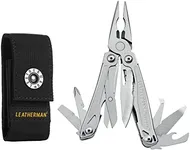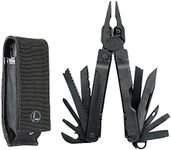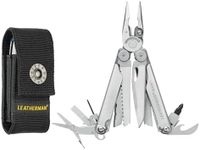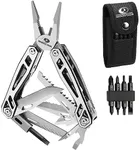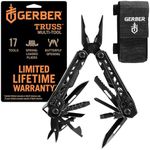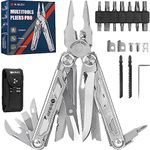Buying Guide for the Best Multi Tools
Choosing the right multi-tool can make a big difference in your daily tasks, outdoor adventures, or emergency situations. Multi-tools are designed to combine several functions into one compact device, but not all are created equal. The best approach is to think about how and where you plan to use your multi-tool most often. Consider the types of tasks you expect to handle, whether it's simple household fixes, camping, cycling, or more specialized work. By understanding the key features and how they relate to your needs, you can select a multi-tool that will be reliable, convenient, and enjoyable to use.Tool SelectionTool selection refers to the variety and types of tools included in the multi-tool, such as pliers, knives, screwdrivers, scissors, and more. This is important because the usefulness of a multi-tool depends on whether it has the functions you actually need. Some multi-tools are packed with dozens of tools, while others focus on a few essentials. If you need a multi-tool for general use, look for a balanced set of common tools. For specialized activities like cycling or fishing, choose one with tools tailored to those tasks. Think about your most frequent needs and make sure the multi-tool covers them without unnecessary extras that add bulk.
Size and WeightSize and weight determine how portable and comfortable the multi-tool is to carry and use. A larger, heavier multi-tool may offer more features and be sturdier, but it can be cumbersome to carry in your pocket or on a keychain. Smaller, lighter models are easier to carry every day but may sacrifice some functionality or durability. If you plan to carry your multi-tool daily, prioritize compactness and lightness. For home, car, or camping use where portability is less critical, a larger tool with more features might be a better fit.
Build Quality and MaterialsBuild quality and materials affect the durability, longevity, and safety of the multi-tool. High-quality materials like stainless steel resist rust and wear, while solid construction ensures the tools won't break or bend easily. Some multi-tools use plastic or lower-grade metals, which can be lighter but less durable. If you expect to use your multi-tool frequently or in tough conditions, prioritize robust materials and solid construction. For occasional or light use, a simpler build may suffice.
Ease of UseEase of use covers how simple it is to access and operate the tools, including features like one-handed opening, locking mechanisms, and comfortable grips. This is important for safety and convenience, especially if you need to use the tool quickly or with one hand. Some multi-tools have tools that are hard to open or require both hands, which can be frustrating. If you value quick access or plan to use the tool in challenging situations, look for features that make operation smooth and safe.
Safety FeaturesSafety features include locking mechanisms that keep tools securely in place during use, preventing accidental closure or injury. This is especially important for sharp tools like knives or saws. Some multi-tools have all tools lock, while others only lock the main blade or none at all. If you plan to use your multi-tool for demanding tasks or with significant force, prioritize models with reliable locking systems. For light or occasional use, this may be less critical but still worth considering.
Maintenance and CleaningMaintenance and cleaning refer to how easy it is to keep the multi-tool in good working order. Some designs allow for easy disassembly and cleaning, while others are more difficult to maintain. This matters if you use your tool in dirty or wet environments, as debris and moisture can cause rust or make the tool hard to operate. If you expect to use your multi-tool outdoors or in messy situations, choose one that's easy to clean and maintain.





